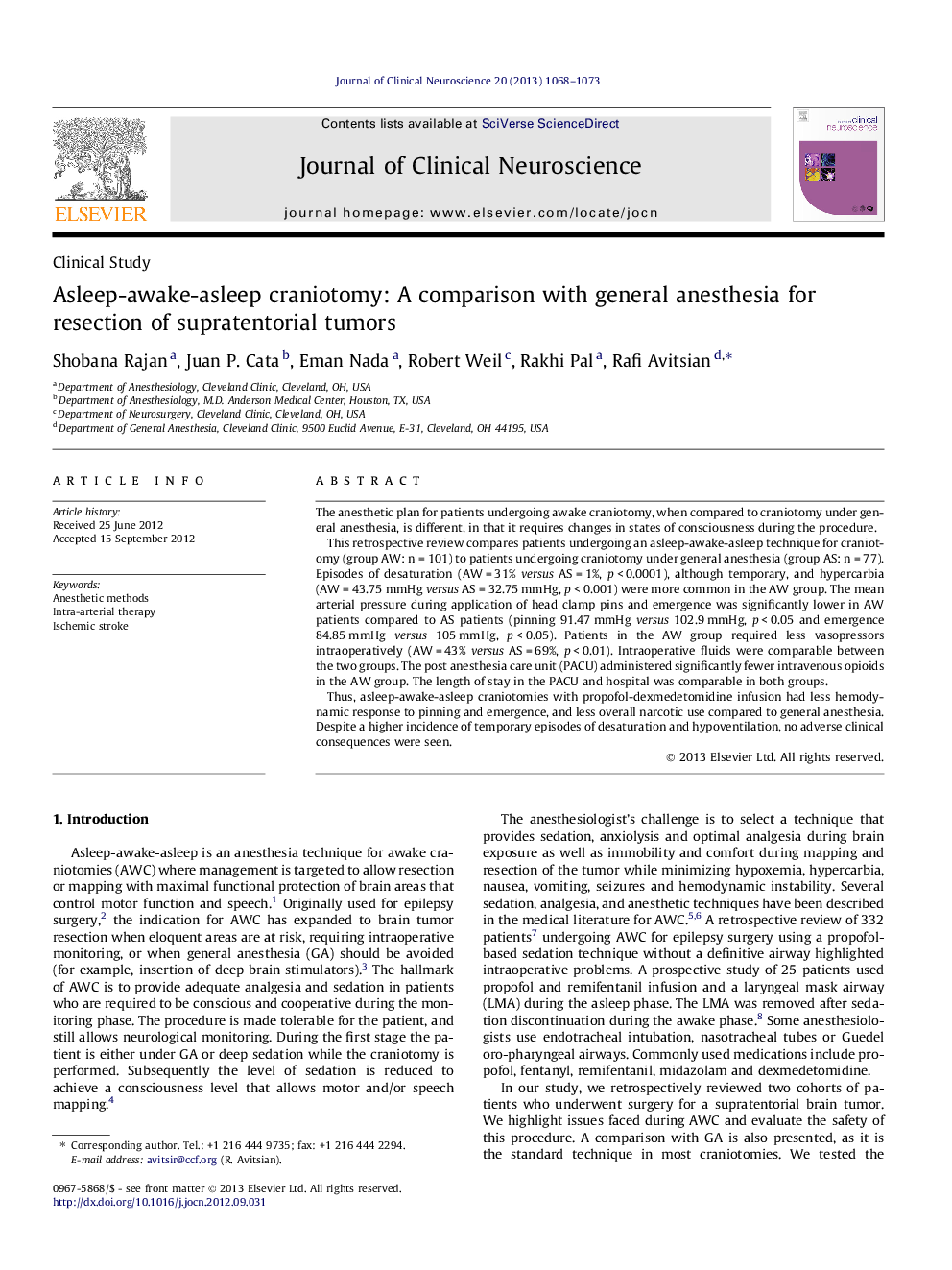| Article ID | Journal | Published Year | Pages | File Type |
|---|---|---|---|---|
| 3060211 | Journal of Clinical Neuroscience | 2013 | 6 Pages |
The anesthetic plan for patients undergoing awake craniotomy, when compared to craniotomy under general anesthesia, is different, in that it requires changes in states of consciousness during the procedure.This retrospective review compares patients undergoing an asleep-awake-asleep technique for craniotomy (group AW: n = 101) to patients undergoing craniotomy under general anesthesia (group AS: n = 77). Episodes of desaturation (AW = 31% versus AS = 1%, p < 0.0001), although temporary, and hypercarbia (AW = 43.75 mmHg versus AS = 32.75 mmHg, p < 0.001) were more common in the AW group. The mean arterial pressure during application of head clamp pins and emergence was significantly lower in AW patients compared to AS patients (pinning 91.47 mmHg versus 102.9 mmHg, p < 0.05 and emergence 84.85 mmHg versus 105 mmHg, p < 0.05). Patients in the AW group required less vasopressors intraoperatively (AW = 43% versus AS = 69%, p < 0.01). Intraoperative fluids were comparable between the two groups. The post anesthesia care unit (PACU) administered significantly fewer intravenous opioids in the AW group. The length of stay in the PACU and hospital was comparable in both groups.Thus, asleep-awake-asleep craniotomies with propofol-dexmedetomidine infusion had less hemodynamic response to pinning and emergence, and less overall narcotic use compared to general anesthesia. Despite a higher incidence of temporary episodes of desaturation and hypoventilation, no adverse clinical consequences were seen.
